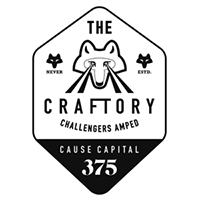Meat and Masculinity: Is Meat the Original Status Symbol?
Image: Oliver Sjöström
What we eat has consequences for the planet, and this can no longer be ignored. Understanding why we keep choosing animal products, even when we know they are unsustainable is now critical.
We may think we make our own decisions, but behavioural psychology tells us that we actually don’t base our choices on the objective standards we might imagine. Instead, a whole concoction of arbitrary assessments; anything from race, gender or class through to societal expectation and peer pressure can influence the decisions we make. Nowhere is this more apparent than in the food we eat. But our individual diets do not only impact ourselves. What we eat has consequences for the planet, and this can no longer be ignored.
70 billion animals are raised for human consumption a year, taking up one-third of the planet’s ice-free land surface and using 16% of fresh water globally. According to the UN Food and Agriculture Organisation, commercially reared livestock is producing 14% of greenhouse gases. Shocking though these statistics are they don't seem to be enough to encourage the average meater to change their diet. In fact, the trend seems to be moving in the opposite direction: The US Department of Agriculture found that in 2011 we ate an average of nearly 30 kilograms more meat than we did in 1951 and across the world, this appetite for animal protein is on the rise. The Organisation for Economic Cooperation and Development estimates that by 2020 the demand for meat in North America will increase by 8% (since 2011), in Europe by 7% and in Asia a staggering 56%.
Understanding why we keep choosing animal products, even when we know they are unsustainable is now critical.
What have men got to do with it?
Eating animals has long been a status symbol; meat has traditionally been considered a high-status food with strong positive associations across the world. Studies have found that individuals who value power will tend to eat more meat and other research has indicated that meat consumption can be correlated with support for hierarchy, social dominance and a lack of openness to new experiences. Because of this, the value attached to meat-eating is particularly prevalent in men who are looking to enhance or maintain their social status.
Power, strength and other cultural associations with masculinity are always being constructed by cues from other men. Men share their expectations about what they ought to eat and what best symbolises virility and muscle, while society pressures us to make gendered food choices. Mammalian muscle such as steak and hamburgers are seen as ‘male’ foods as are energy-dense, spicy or strongly flavoured foods, whereas soft, lighter and sweeter foods are perceived as more ‘feminine’.
The societal connection between meat-eating and manliness reflects traditional, patriarchal notions of performance and power and still has an influence over our choices. This is a persistent oversimplification of what is right for our bodies and is having hugely detrimental consequences on human and ecological health. Unravelling and rethinking these connections could be critical to the prospects of global sustainability.
So what do we do?
Conversations around food are putting pressure on the consumer from every angle. It’s not the job of a challenger to make anyone feel guilty, and certainly not to question anyone’s manliness. With this insight in mind it’s not hard to see why traditional vegetarian/vegan marketing does not convert carnivores. How about we do away with the binary of what are the ‘right’ or ‘wrong’ foods to eat altogether?
Brands can create a cultural kudos for anyone who takes ANY step to eat less meat. Brands can associate meat to wastefulness and excess. Yes, but this still feels like a fringe exercise. The pro-meat cultural attitudes that relate to masculinity and status are ultimately very hard to change.
Brands offering alternatives to animal products would be wise to work with, rather than attempt to rewire, such a deep-rooted cultural bias in one hit. If what sits behind meat consumption is the need to signal status, a move from ‘meat’ to ‘high performance protein’ might just work - plant protein sources that outperform their animal equivalents could infer even greater status.
Then there’s texture and flavour. The matching texture is critical, but there’s no reason why flavour couldn’t be even better. Fats and spices are the keys to flavour, as is that subtle blend of familiarity and novelty. Bringing super tasty alternatives to familiar cuts and dishes could be a hit.
The angle? “Better than, more than, no compromises, and just happens to not involve animals at all”.
This post was co-written by JP Thurlow and Alice Schulz.
Alice Schulz is a Content Specialist at Semetrical the digital and content marketing agency.
JP Thurlow is a Partner at The Craftory, the alternative investment house on a $300M mission to back the world's boldest CPG challenger brands.


